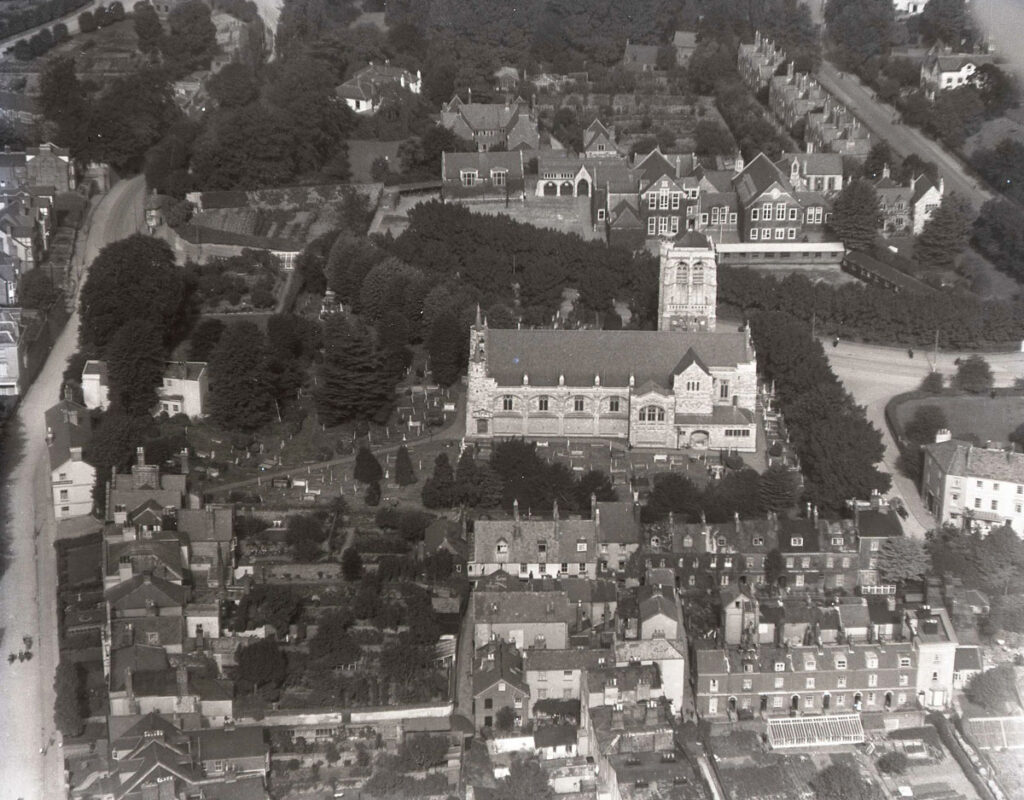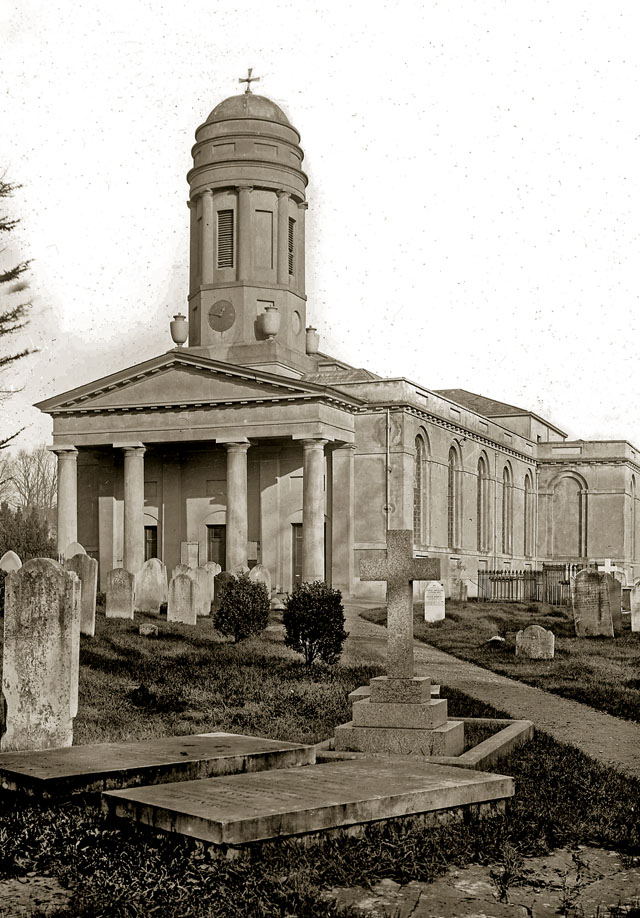Researched by Heritage Advisory Group
D. Caroe was the architect for this building which was erected in 1897-1900. The building’s position, high on St David’s Down, makes it one of the city’s most visible churches. It replaced a Regency church built in the Greek Doric style in 1816, with a small domed tower called the ‘pepper pot’. The Regency church had replaced a small medieval building standing a short distance to the west.
By the late nineteenth century, the Greek style of architecture was no longer fashionable. The new Gothic church of St Michael’s overshadowed St David’s and it was felt that the old building was not fit for purpose. Plans had begun for a new church as early as 1884 but were not realised.
The death of the vicar, in 1893, caused one observer to note: ‘the splendid site which St David’s occupies would have been cleared of the be-plastered walls of the present edifice, to be crowned with a Gothic temple of stone surmounted by a glorious steeple in lieu of the ridiculous pepper-pot.’
The next vicar, Reverend Cyril Valpy-French took up the cause. The building took nearly twenty years to complete with the furnishing of the inside taking even longer. By 1902 the expenditure was £20,512 5 shillings 6 pence, or £1,603,489.66 in today’s money. In the course of demolition of the Regency building, a portion of the Norman font was found in the walls. Another font was recovered from the Barnstaple Inn yard. The new St David’s Church was built with squared grey limestone with dressings in Bath stone and Portland stone.
The tower stands at the north-east, capped with a low roof and turret. John Betjeman regarded it as ‘the finest example of Victorian church architecture in the South West’.
The influences of both the Art Nouveau and Arts and Crafts Movement can be seen in the architectural details, especially the interior where, despite some unhappy modern reordering, the original furnishings, all designed by Caroe, largely remain. There is a spire-like font cover and richly carved benches. The chancel is particularly splendid, guarded by marble statues representing the Annunciation by Gabriel to Mary. Within the chancel gates are magnificent choir stalls in Spanish Renaissance style, rich inlaid marble pavements and a towering carved reredos featuring a Crucifixion group, lit by seven hanging sanctuary lamps.

